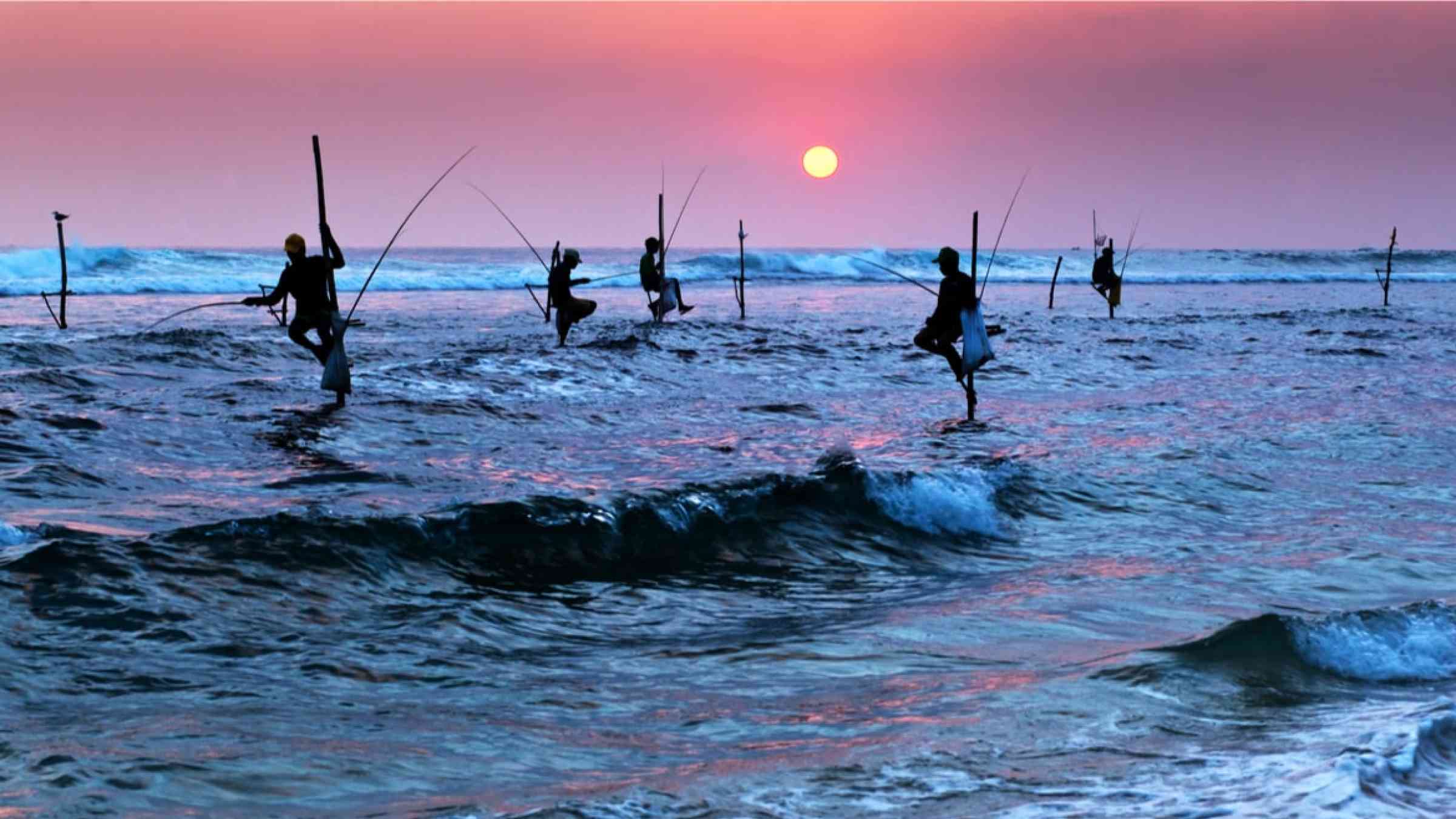Preparing for the impact of climate change in Sri Lanka

In collaboration with international institutions, Sri Lankan policymakers have prepared a suite of initiatives to improve the country’s long-term resilience to climate risks – but they are going unimplemented, Jeevethan Selvachandran writes.
Sri Lanka is a country with a diverse and beautiful natural environment that attracts tourists from every corner of the world, but that environment is under threat.
In recent years, the country’s three-decade-long civil war, the effects of the COVID-19 pandemic, and the country’s economic crisis have dominated the government’s attention – meaning other important issues, like the effects of climate change, have gone under the radar.
This is an important question for Sri Lanka’s policymakers. Amidst the pandemic and its economic setbacks, how is Sri Lanka protecting its valuable environment and combating the effects of climate change?
According to the 2021 Asian Development Bank’s Accelerating Sustainable Development after COVID-19 report, based on data from 2020, Sri Lanka’s climate action measures were identified as being on track in terms of combating climate change.
While the report finds the country is relatively well-positioned to meet its obligations in combating climate change, another listed Sri Lanka among the top 65 countries most at risk from the impacts of climate change, with its effects threatening health, education, and the environment, and called for immediate and effective action.
Another report by the World Bank Group recognised Sri Lanka as especially vulnerable to climate change’s impacts, due to a combination of political, geographic, and social factors.
These impacts include rising temperatures, which are expected to hit Sri Lanka’s most important sectors, like tourism, commercial agriculture, and manufacturing, the hardest. On top of this, increased incidence of disease transmission and natural disasters will make the country vulnerable to unexpected catastrophes.
As they have elsewhere, these changes will disproportionately impact Sri Lanka’s poorest and the most marginalised communities, exacerbating poverty and inequality.
So, what have Sri Lankan policymakers done to prepare?
Recognising the danger, they have prepared initiatives that combat indirect risks associated with climate change, including a Water Sanitation and Hygiene (WASH) program through the Ministry of Education.
In terms of poverty and inequality, they have also begun cooperating with international actors like the United Nations Development Programme and the World Bank to focus on a green economic recovery.
This includes climate-smart development, primarily by empowering local small landholders, ensuring food and water security, biodiversity conservation, sustainable biomass energy production, and increased disaster risk reduction, preparedness, and management.
Much of this cooperation with the World Bank focuses on flood-risk mitigation and long-term resilience to climate risks, beginning in 2010 with the Dam Safety and Water Resources Planning Project.
The Sri Lankan Government also recently signed a $92 million financing agreement with the World Bank for the Climate Resilience Multi-Phased Program Phase I Project, comprising of five components.
The first is of these is improving forecasting and early-warning systems for high impact weather and floods.
The second is investment in landslide and flood risk mitigation in the Kelani river.
The third is land acquisition and resettlement assistance.
The fourth is ensuring successful implementation of these systems.
Finally, the fifth is a Contingent Emergency Response Component, which allows the two parties to reallocate funds from other project components to mitigate, respond to, and recover from potentially harmful consequences of emergencies.
Surely, these are all great signs.
But despite preparing these necessary steps, implementation has been limited, especially in the war-ravaged northern region of Sri Lanka, which was severely hit by Cyclone Burevi at the end of 2020.
Part of the reason for this is the current economic crisis, which seems to be drawing policymakers’ attention away from preparing for the impacts of climate change.
For example, amidst its economic emergency, Sri Lanka is strongly considering oil and gas investments worth approximately $167 billion in order to settle its national debts. This move comes just before the United Nations Climate Change Conference, or COP26, where intensive discussions on decarbonisation will take place.
Indeed, at its Energy Sector Response Meeting in 2019, Sri Lanka pledged to enforce the targets of the Paris Agreement on climate change, including by reducing dependency on fossil fuels and investments in them. The choice to invest heavily in oil and gas would stand in contrast to these principles.
Unfortunately, this move shows that climate change, despite being a crucial issue for Sri Lanka, may be deprioritised in order to deal with the country’s current economic crisis.
In the longer term, a delay in the implementation of climate policies could hinder Sri Lanka’s ability to overcome climate change-related economic setbacks, harming its citizens’ future.
That future, whether Sri Lanka acts on it or not, relies on the execution of the climate change preparations that policymakers have planned in collaboration with international actors. This must not fall aside for the sake of solving short-term problems.